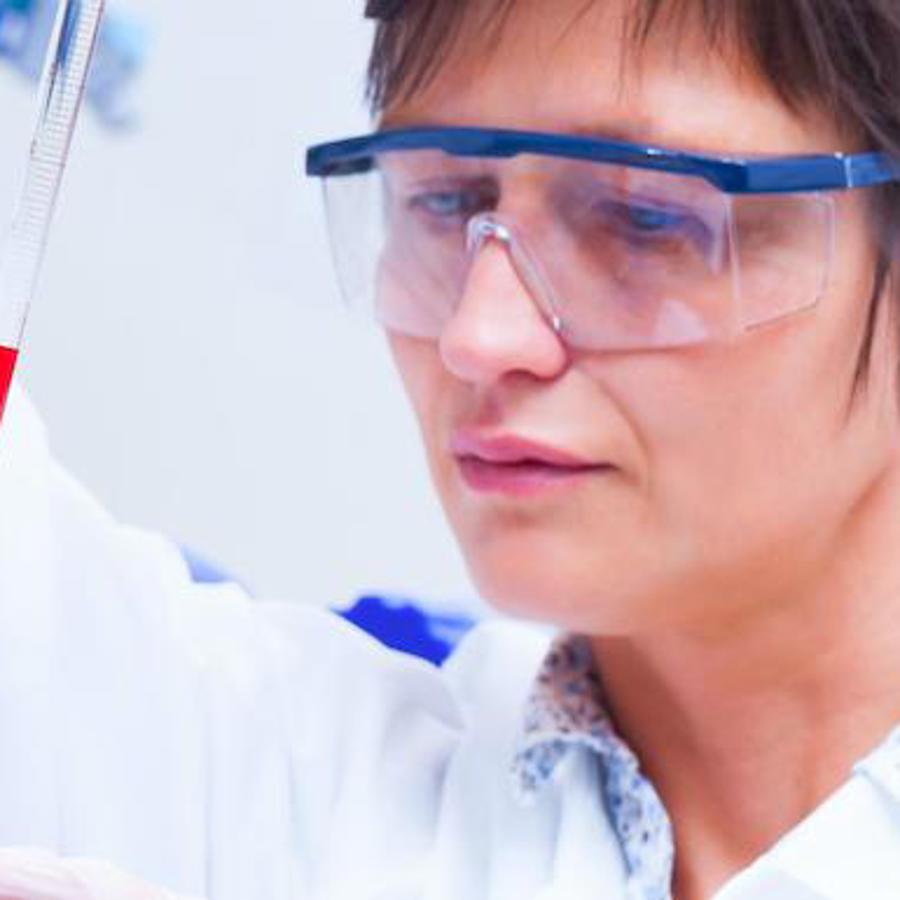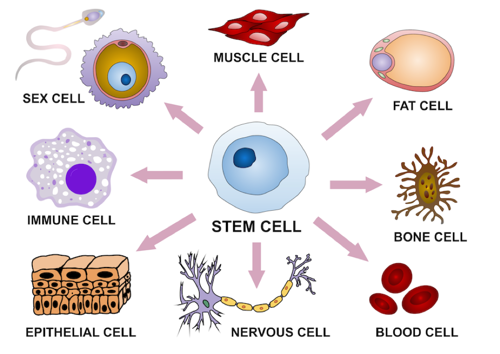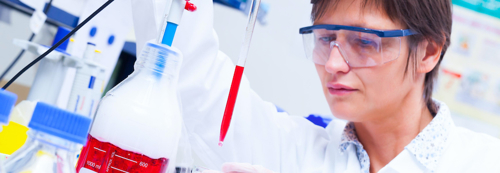
What is the future of stem cell research?
February 24, 2006

- Related Topics:
- Stem cells,
- Futuristic science,
- Bioethics
A middle school student from California asks:
"What is the future of stem cell research?"
Editor’s note (8/16/2021): Some of the information in this article is out of date. While embryonic stem cells are still an area of interest to scientists, research today tends to focus on induced pluripotent stem cells (iPSCs), which are made from adult cells.You can read more about iPSCs here.
Scientists predict that stem cells will change everything. Diabetics won't need insulin, the paralyzed will walk and we'll all live a lot longer! Wow! And that's just a short list of the possibilities.
So the future of stem cell research into the distant future is a bright one. But what can we expect in the short term? What's going on right now in stem cell research?
Huge strides are being made with adult stem cells in conditions like lupus and heart failure. But the most promising research using embryonic stem cells appears a bit more troubled.
What are stem cells?
Before getting into the research, let's go into a bit about stem cells. Stem cells are so important because they can become different cells and they can make lots of copies of themselves. Sort of like the bad guy in Terminator 2 who could morph into different people. Most cells can't do this.
Once a stem cell becomes a muscle or a nerve cell, that's it -- it can't change back or make more copies of itself. So when your spine is severed, it can't repair itself. You are paralyzed for life.
This is why stem cells are so important for any condition for which a cure needs new cells. In our spine example, the idea would be to add back stem cells which would turn into nerve cells. The paralyzed could walk again.
We need to go over one more thing before discussing the future of stem cell research -- the difference between adult and embryonic stem cells.
We all have stem cells inside of us. These stem cells are responsible for replacing worn out cells in our body. For example, without stem cells we'd run out of intestine in a couple of days, our skin in a couple of weeks and our blood in a couple of months!
But the stem cells inside of us are limited because they can only turn into some kinds of cells. For example, blood stem cells can only become blood, not nerves. So we couldn't fix the spine with blood stem cells. And we haven't found many nerve stem cells yet.

Embryonic stem cells
This is where embryonic stem cells come in. These cells come from five-day-old embryos -- a cluster of stem cells smaller than a speck of sand. There are only 40-150 cells at this stage.
These few cells have to become all of the different tissues that make up a person. So they can become anything, even nerve cells to make a spinal cord.
But the use of embryonic stem cells is controversial for a couple of reasons. First, some people think that it encourages abortion.
A big misunderstanding is that most embryonic stem cells come from aborted fetuses. Aborted fetuses are not truly embryonic because they are much older and most of the stem cells have committed to becoming a specific type of cell. Essentially you get adult stem cells from aborted fetuses.
The other, more significant concern is that up until now, to get embryonic stem cells, you had to destroy an embryo. For people who consider these 40-150 cells a human life, this is unacceptable. Some recent work with mice might get us past this problem, though.
Scientists have taken a few cells from a mouse embryo and put the embryo back into a female mouse. The result? A normal mouse pup and embryonic stem cells -- a win-win situation.
While we haven't done this in people yet, we know we can take 1 or 2 cells from an embryo without harming it. Doctors do this in a procedure called preimplantation genetic diagnosis (PGD), which is used to look for genetic diseases in unborn embryos. Perhaps in the near future, a couple undergoing in vitro fertilization will be able to donate a few of their embryo's stem cells to science and still have enough of the embryo's cells to make a complete baby!
This is good news for stem cell research from an ethical standpoint; embryos would not be wasted but used for two purposes -- pretty neat. And the child gets a bonus as well -- personalized stem cells!
Uses for stem cells
Personalized stem cells are stem cells that have the patient's DNA. Essentially, scientists will one day be able to make an embryonic stem cell from the patient.
How do you turn an adult back into an embryo? You clone him or her.
The way this would be done is to take the DNA from the patient and put it into a human egg that has no DNA. The "fertilized" egg would then turn into stem cells that have the exact DNA of the patient.
These cells could then be made to turn into the type of cells that would be put back into the patient. For example if the patient had a severed spine then the stem cells could be turned into nerve cells.

But why go through all of that trouble? Why not use a stem cell from someone else? One reason is to prevent organ rejection.
Our bodies don't tend to like foreign tissues being put into them. Our immune systems see them as a threat and attack. This is why heart and liver transplant patients need to take a lot of medicine to dampen their immune systems.
Back in June of 2005, it seemed that the future for making these personalized stem cells was starting to unfold nicely. A South Korean scientist, Dr. Hwang Woo Suk, reported that he had made 11 cell lines made from cloned human embryonic cells. These embryonic stem cells matched the people they came from!
As it turns out, Dr. Suk falsified all his data and none of the 11 cell lines were made as he described them. In fact, he hasn't even cloned a human as he previously claimed. This sets the field back for a couple of reasons.
First off, scientists stopped working on this problem because they thought it was solved. We've lost 2 years on this research that we can't get back. This type of scandal also colors how the public will see future stem cell research. The public will wonder if new research they see has been overhyped and even faked.
The future of stem cells
However, the ideas still stand and one day scientists will do what Hwang Woo Suk has claimed he has done. It will be just a matter of time -- thank goodness science is self-correcting!
While embryonic stem cell research has hit some snags, adult stem cell research has hit its stride. Most people have heard of bone marrow transplants. These are actually blood stem cell transplants. This is a current way that we can use adult stem cells to treat people with leukemia, a form of blood cancer.
Adult stem cells are being used to treat a number of other conditions like lupus, heart disease, and even diabetes.
As you can see the present and future of stem cell research looks bright and depends on everyone seeing the vast potential of these amazing cells.

Author: Dr. Aaron Shafer
When this answer was published in 2006, Aaron was a postdoctoral fellow in the Department of Molecular and Cellular Physiology, studying the activation mechanism of g protein-coupled receptors in Brian Kobilka's laboratory. Aaron wrote this answer while participating in the Stanford at The Tech program.
 Skip Navigation
Skip Navigation
